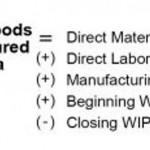Current ratio Working capital ratio calculator
- Danh mục: Bookkeeping
It takes all of your company’s current assets, compares them to your short-term liabilities, and tells you whether you have enough of the former to pay for the latter. The current ratio, which is also called the working capital ratio, compares the assets a company can convert into cash within a year with the liabilities it must pay off within a year. It is one of a few liquidity ratios—including the quick ratio, or acid test, and the cash ratio—that measure a company’s capacity to use cash to meet its short-term needs. The current ratio is used to evaluate a company’s ability to pay its short-term obligations, such as accounts payable and wages. The higher the result, the stronger the financial position of the company. A current ratio of 1.0 or greater is considered acceptable for most businesses.
Use the current ratio calculator to calculate current ratio, historical financial ratios and year on year ratio changes. The current ratio calculator will then calculate trends and provide a graph of results for your financial year on year metrics. What counts as a good current ratio will depend on the company’s industry and historical performance. Current ratios of 1.50 or greater would generally indicate ample liquidity.
- Fillo advises calculating a current ratio each month—or at a limit quarterly—and then watching for trends.
- The resulting number is the number of times the company could pay its current obligations with its current assets.
- It’s the most conservative measure of liquidity and, therefore, the most reliable, industry-neutral method of calculating it.
- Calculating the current ratio at just one point in time could indicate that the company can’t cover all of its current debts, but it doesn’t necessarily mean that it won’t be able to when the payments are due.
That means the company in question can pay its current liabilities one and a half times with its current assets. The current ratio is calculated simply by dividing current assets by current liabilities. The resulting number is the number of times the company could pay its current obligations with its current assets. The quick ratio provides the same information as the current ratio, however the quick ratio excludes inventory. The quick ratio therefore provides a portrait of the company’s immediate liquidity, since inventory, which cannot be quickly converted into cash, is not taken into account. Note that the quick ratio applies mainly to businesses that have inventory, as opposed to service businesses.
You can find them on your company’s balance sheet, alongside all of your other liabilities. Simply follow a couple of straightforward steps to perform the current ratio calculation with our financial ratio calculator. The current Ratio is one of the most vital calculations that lets you calculate the ability of a company to pay off its debts.
The debt to income calculator, or DTI calculator for short, is an invaluable tool for anyone who has taken out any type of loan. This calculator will recording cost of goods sold show you how much debt you have and whether you can afford another loan. This online calculator will calculate the percentage-based remuneration.
Step 1: Gather the necessary financial information
The current ratio calculator allows you to calculate the comparison between current assets and current liabilities. This current ratio is classed with several other financial metrics known as liquidity ratios. These ratios all assess the operations of a company in terms of how financially solid the company is in relation to its outstanding debt. Knowing the current ratio is vital in decision-making for investors, creditors, and suppliers of a company. The current ratio is an important tool in assessing the viability of their business interest.
Current Ratio Calculation Example
“Paying attention to the current ratio allows you to correct issues quickly, as they arise,” Fillo explains. Paying attention to the current ratio allows you to correct issues quickly, as they arise. These typically have a maturity period of one year or less, are bought and sold on a public stock exchange, and can usually be sold within three months on the market. With our time and a half calculator, you can easily find the overtime rates for time and a half, double pay, and triple pay. The Future Value of Annuity Calculator can be used to find the future value of a set of equal cash flows at a particular date. The payback period calculator allows you to estimate how long it will take to make a profit on an initial investment.
Limitations of Using the Current Ratio
Fillo advises calculating a current ratio each month—or at a limit quarterly—and then watching for trends. The ratio may fall below 1 to 1, but Fillo says as long as that’s only an exception rather than a trend, a business is in good shape. He does warn that doing the calculation only annually may end up with you finding problems too late—and being able to take action to rectify the situation. Some businesses may prefer an even higher current ratio, say 2 to 1 or 3 to 1. “A current ratio of 1.2 to 1 or higher generally provides a cushion. A current ratio that is lower than the industry average may indicate a higher risk of distress or default,” Fillo says.
Additionally, some companies, especially larger retailers such as Walmart, have been able to negotiate much longer-than-average payment terms with their suppliers. If a retailer doesn’t offer credit to its customers, this can show on its balance sheet as a high payables balance relative to its receivables balance. Large retailers can also minimize their inventory volume through an efficient supply chain, which makes their current assets shrink against current liabilities, resulting in a lower current ratio. Simply add the total current assets and current liabilities and get the current ratio within seconds through this current ratio calculator. The current ratio of 1.0x is right on the cusp of an acceptable value, since if the ratio dips below 1.0x, that means the company’s current assets cannot cover its current liabilities. In theory, the higher the current ratio, the more capable a company is of paying its obligations because it has a larger proportion of short-term asset value relative to the value of its short-term liabilities.
To assess this ability, the current ratio compares the current total assets of a company to its current total liabilities. The current ratio, also known as the working capital ratio, measures https://www.wave-accounting.net/ the capability of a business to meet its short-term obligations that are due within a year. The ratio considers the weight of total current assets versus total current liabilities.
Meanwhile, an improving current ratio could indicate an opportunity to invest in an undervalued stock amid a turnaround. This is based on the simple reasoning that a higher current ratio means the company is more solvent and can meet its obligations more easily. The owner of Mama’s Burger Restaurant is applying for a loan to finance the extension of the facility. To estimate the credibility of Mama’s Burger, the bank wants to analyze its current financial situation.
In this scenario, the company would have a current ratio of 1.5, calculated by dividing its current assets ($150,000) by its current liabilities ($100,000). The cash asset ratio, or cash ratio, also is similar to the current ratio, but it only compares a company’s marketable securities and cash to its current liabilities. The current ratio (also known as the current asset ratio, the current liquidity ratio, or the working capital ratio) is a financial analysis tool used to determine the short-term liquidity of a business.
Current Ratio Formula
CFI is on a mission to enable anyone to be a great financial analyst and have a great career path. In order to help you advance your career, CFI has compiled many resources to assist you along the path. For more resources, check out our business templates library to download numerous free Excel modeling, PowerPoint presentations, and Word document templates. Get instant access to video lessons taught by experienced investment bankers.


























